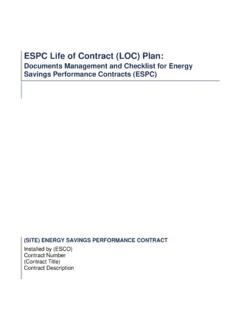Transcription of Field Guide - energy.hawaii.gov
1 Field Guidefor energy Performance Comfort andValue in Hawaii HomesTHE DEPARTMENT OF BUSINESS, ECONOMIC DEVELOPMENT & TOURISMSTATE OF HAWAIIF ield Guide for EnergyPerformance, Comfort,and Value inHawaii HomesState of HawaiiDepartment of Business, Economic Development& TourismEnergy, Resources & Technology DivisionThe Honolulu ChapterAmerican Institute of ArchitectsEdition 2001 THE DEPARTMENT OF BUSINESS, ECONOMIC DEVELOPMENT & TOURISMSTATE OF HAWAIIA cknowledgments/CreditsFunding:Grant Administrator:Project Manager: Department of energy (USDOE) grant to the State of HawaiiDepartment of Business, Economic Development & Tourism (DBEDT)DBEDT energy , Resources & Technology DivisionThe Honolulu Chapter, American Institute of Architects (AIA)
2 James Furuhashi, Associate AIA, Architecture StudioNick Huddleston, AIAS tephen Meder, , Architecture StudioKathleen O Brien, O Brien & Company, publication was funded by Department of energy Grant #DE-FG51-97R020881 and administered by theState of Hawaii Department of Business, Economic Development & Tourism, and the Honolulu Chapter, AmericanInstitute of Architects. Any opinions or recommendations expressed herein are those of the authors and do not necessarilyreflect the views of, nor constitute an endorsement by, the USDOE, State of Hawaii, the AIA, or any of their July 2001 Cover: 100% de-inked post consumer recycled fibers (Fraser Genesis, 110# cover Husk Vellum ).
3 Text: 50% Recycled Paper; 30% Postconsumer (Fraser Passport, 70# text Gypsum Smooth ).Printed with soy-based Drawing: Victor Olgyay, Stephen Meder, James FuruhashiCover Design: James Furuhashi, Stephen MederI N T R O D U C T I O N I : AcknowledgmentsTable of ,trofmoC, ' : : : "neerG"dliuBoteliMartxEehtgnioG:12retpah C101secidneppA:.. :E1-EratSygrenErofseicnelaviuqE:F .. :ydutSesaC:I1-II N T R O D U C T I O N I : AcknowledgmentsList of ,emoHtneiciffenI-ygrenEna,emoH9 ,dengiseD-lleWA01 'iiawaH31 'nuSehttcelfeRotslairetaMfooRgnisU23 :noitalitneVfooR63 :noitalitneVfooR63 :gnidahSwodniW24.
4 GnidahSwodniW24 )setamilCetarepmeT(gnizalGe-woLdnathgiln uS34 )setamilClaciporT(gnizalGe-woLdnathgilnu S34 )sllaWtnecajdA(noitalitneVssorCroftnemeg narrAwodniW55 )llaWemaS(noitalitneVssorCroftnemegnarrA wodniW55 )ngiseDdooG(noitalitneVssorCdnasthgieHwo dniW65 )ngiseDrooP(noitalitneVssorCdnasthgieHwo dniW65 N T R O D U C T I O N I : ,tceridnI17 ,esuffiD17 ,noitcudorPygrenE19 !sgnivaS$$snaeMemoHehtniycneiciffE-ygren E39 of )snoitpOrelooC(etihWgniwohS,slairetaMgni fooRtnereffiDfonosirapmoC23 ,niaGtaeH,epyTgnizalGfonosirapmoC44 )0002,OCEH(sgnivaS99 )
5 0002,OCEM(sgnivaSgnitaeHretaWraloSoteuDr ewoPgniyuBdesaercnI99vi1 About this Field GuideAbout this Field GuideAbout this Field GuideThe energy Efficiency GuidelinesIn early 2000 the State of Hawaii Department of Business, Economic Development & Tourismdeveloped voluntary guidelines for energy - efficient design and construction of single family Guidelines for energy Performance, Comfort, and Value in Hawaii Homes, the Guidelinesare a resource for architects, builders, developers, and owner-builders. The Guidelines identifysignificant opportunities to reduce energy use, improve comfort, lower utility bills, provide value,and improve the quality of life for Hawaii s home owners.)
6 (A copy of the energy EfficiencyGuidelines follows on page 3.) The overall approach in developing and implementing the EnergyEfficiency Guidelines is to:1. Reduce heat build -up and energy use in the home through passive cooling strategies that minimizeor eliminate the need for air Reduce the need for electric lighting through the controlled use of Reduce energy requirements even further by installing energy - efficient systems and equipmentfor water heating, lighting, household tasks, and air conditioning, when it is Field GuideThis Field Guide provides detailed illustrations and other information that show how to design andbuild an energy - efficient , comfortable.
7 And economical home in Hawaii using the strategiesrecommended in the energy Efficiency I of the Field Guide provides basic information about climate, topography, and humancomfort that lays the foundation for understanding the special opportunities and challenges whendesigning energy - efficient homes in II and III of the Field Guide present recommended techniques based on the energy EfficiencyGuidelines, along with illustrations and details that will help you implement the techniques foryour home. Recommended techniques are identified as in the following example:Recommended Technique: Use design elements to shade IV of the Field Guide discusses the cost of energy and the identifies several opportunitiesfor significant cost savings, such as solar water heating, natural ventilation, and radiant IV also describes additional financial incentives and other resources available in Hawaii forbuilding energy - efficient this Field GuideAbout this Field GuideAt the end of the Field Guide you will find these appendices:Appendix A.
8 Recommended Techniques A summary listing of recommended techniques for (1) energy - efficient equipment and appliances, and (2) B: Resources Where to go for more C: Bibliography A list of the major sources for the information in this Field D: Shading Formulas Additional information related to developing a window shadingdesign (discussed in Section II, Chapter 10).Appendix E: Operation and Maintenance A summary of operational Do s and Don ts andmaintenance tasks for common household appliances, which will help home owners keep theirhome operating in an energy - efficient F: Equivalencies for energy STA R Homes in Hawaii energy STA R Homes developedthese to aid implementation of energy STA R for homes participating in the HECO, MECO, andHELCO solar domestic water heating G.
9 Utility Co-Payments A summary of co-payments available through utility programsthat encourage the use of solar hot water heating systems and other energy - efficient H: Certification Programs and Other Resources Information about certification programsthat help identify environmentally preferable I: Case Study Model Demonstration Home Description of the Model DemonstrationHome (dedicated May 15, 2001, as the First Hawaii BuiltGreenTM Home), which incorporatesaffordable techniques to provide energy efficiency and comfort without air : This Field Guide is intended as a resource for builders and owner-builders wishing to improvethe energy performance of homes in Hawaii.
10 However, this document is not a substitute for nordoes it eliminate professional design and engineering judgment or accepted engineering andconstruction practices. Each home and site may have characteristics that could render any one ormore of the practices suggested in this Field Guide inappropriate or inapplicable. It is theresponsibility of the home builder or owner-builder to select measures that are appropriate in eachcase. It is highly recommended that owner-builders consult with professionals when planning energy Efficiency GuidelinesEnergy Efficiency GuidelinesGuidelines for energy Performance, Comfort, and Value in The energy Efficiency Guidelines were prepared as a Guide for home buildersand owners to use in creating homes that are energy - efficient and comfortable with little or noair conditioning.










